If you want to achieve ideal body composition — for most of us, lean, strong, and athletic — there are certain paths to follow. Keep in mind, they’re not necessarily those laid out by the mainstream media (especially as targeted to women).
In no particular order, here’s some of the misinformation you’ve been subjected to:
- Eat fewer calories
- Run/bike/elliptical more
- Stay in the low-intensity, long-duration “fat burning zone”
- Don’t eat fat
- Target your abs
- Insert (miracle berry, powder, pill) into your diet
- Tone problem areas with light weights
Each of these is wrong (or incomplete) in its own special way, and in this series, we’ll deal with them all, but today, we’ll further our case by addressing the number one thing you should be doing beyond diet.
It’s the simplest of fat loss advice (and we’ll call it “the Shortcut”).
The Shortcut
Lift weights. Often. Lift moderate loads for many reps, and heavy loads for a few reps.
Before we get to a more concrete training plan (it’s coming), let’s talk about “why” of this advice:
Your body requires energy to sustain itself, whether you’re exercising, thinking hard, relaxing, or just sleeping. Somewhat surprisingly, the majority of your energy expenditure occurs during these last two states — while you’re at rest or sleeping.
The amount of energy you use at rest (known as your “resting metabolic rate” or RMR), comprises 60-70% of your overall energy usage, and is influenced by several factors, including:
- Lean body mass
- Genetics
- Organ size
- Age
- Time since your last meal and its macronutrient composition
We’ll concentrate on the first factor — lean body mass.
There’s an extremely robust correlation between your lean body mass and the amount of energy you expend at rest:
- The more lean body mass you have, the higher your RMR.
- The higher your RMR, the more energy you require to maintain your lean tissue.
- The more energy you require, the more you need to eat (or the more fat tissue you’ll burn) on a daily basis.
In the real world, we see the third point play out in tandem — athletes with a high proportion of lean body mass both eat more and have less stored body fat.
The key to making this cycle work is increasing your lean body mass. In practice, this means building muscle through weight lifting, allowing you to burn more fat while at rest.
Before you freak out and run for the exit (presuming I’m asking you to “bulk up”), realize a few things:
- For any given volume, muscle weighs more than fat — about 15% more. This means when you add lean muscle mass and burn fat, you’ll be physically smaller and you’ll weigh more.
- Put another way, when you add muscle, you’ll do the opposite of “bulk up.” A pound of muscle takes up less space than a pound of fat, so you’ll actually get smaller, as evidenced by the tape measure and looser clothing.
- Still, the scale will likely show an increase in weight. This is safely ignored, as you’ll look better, feel more athletic, and drop clothing sizes despite the increased scale weight.
- For the sake of your sanity (and mine), this bears repeating — ignore your scale!
Increasing your lean body mass through weight lifting is easily done (especially for the novice trainee). It requires some simple tools, dedication to lifting sessions three times per week, and a bit of competent instruction.
The Movements
Here are your lifts:
- Goblet squat
- Press
- Deadlift
- Push-up
- Row
For each, we’ll use a dumbbell (or a pair of dumbbells) to execute the movement. If you don’t have dumbbells, they’re easily acquired at your local sporting goods store, via Amazon, or least expensive of all, via Craigslist. Of course, you can also just join the local gym, which will give you access to every dumbbell you could need.
In an ideal world, you’d have two pair, one heavier and one lighter. The heavier pair would be useful for deadlifting and goblet squatting, the lighter pair for presses and rows.
(As a side note, dumbbells will be the single most useful piece of fitness apparatus you own, short of your athletic shoes. Be sure to get a pair or two.)
How to Perform the Goblet Squat
- Hold the dumbbell by the top. With your feet at shoulder width, tighten your abs and tuck your elbows against your sides. Bias your weight toward your heels.
- Keeping your weight on your heels, send your butt back and down as you bend your knees, descending until your hips are below your knees. If you are limited by orthopedic issues, you may limit this range of motion, but strive to meet the standard if possible.
- Return to standing.
How to Perform the Press
- Begin with the dumbbells in the “rack position” on your shoulders. Your feet should be at hip width (narrower than the squat), abs and butt tight.
- Using only your arms, press the dumbbells to full extension, with your elbows straight. Make sure to press the dumbbells straight up, and push your head forward slightly as your reach extension.
- Return to the rack position.
How to Perform the Deadlift
- Begin with the dumbbells on the ground, holding them with your hands toward the back of the handle. Your feet will be at hip width, with your back flat, and your butt higher than your knees. Your weight is biased toward your heels, and the front head of the dumbbell will be touching the ground slightly in front of your toes.
- Tighten your abs before moving.
- Stand up, keeping the dumbbells close to your sides.
- Return to the start position, sending your butt back and bending your knees
How to Perform the Push-up
- Start in a plank with your arms straight, and your shoulders, hips, knees, and ankles in a straight line. Keep your abs tight and engaged.
- Bend your arms, keeping your elbows against (or very near) your sides, descending until your chest touches the ground.
- Push back up to a plank, maintaining the straight line between shoulders, hips, knees, and ankles.
- To reduce the difficulty of the push-up, drop your knees to the ground, keeping a straight line between the shoulders, hips, and knees.
How to Perform the Row
- Start in a plank, using the same positioning as the top of a push-up (shoulder, hips, knees, ankles in line). Rather than having your hands on the ground, grip your dumbbells.
- Keep your feet spread apart for stability.
- Pull one dumbbell to your chest, leaving the other one on the ground. You will find it helpful to shift your weight toward the side that isn’t moving.
- Return the dumbbell to the ground, then row with the other side.
- Like the push-up, you can scale the row by dropping your knees to the ground, keeping a straight line between the shoulders, hips, and knees.
The 30-Day Program
Now that you’ve got the movements, let’s put them together into a basic program to get you started. This is by no means the only combination of days and exercises possible, but it will form a good base for the beginning athlete, building lean muscle and accelerating your body composition change.
Week 1:
- Monday — 5 sets of 10 goblet squats, 5 sets of 5 presses
- Tuesday — Rest or other activity
- Wednesday — 5 sets of 10 deadlifts
- Thursday — Rest or other activity
- Friday — 5 sets of 5 rows (each side), 5 sets of 5 push-ups
- Saturday — Rest or other activity
- Sunday — Rest or other activity
Week 2:
- Monday — 7 sets of 10 goblet squats, 7 sets of 5 presses
- Tuesday — Rest or other activity
- Wednesday — 7 sets of 10 deadlifts
- Thursday — Rest or other activity
- Friday — 7 sets of 5 rows (each side), 7 sets of 5 push-ups
- Saturday — Rest or other activity
- Sunday — Rest or other activity
Week 3:
- Monday — 7 sets of 10 goblet squats, 7 sets of 5 presses
- Tuesday — Rest or other activity
- Wednesday — 7 sets of 10 deadlifts
- Thursday — Rest or other activity
- Friday — 7 sets of 5 rows (each side), 7 sets of 5 push-ups
- Saturday — Rest or other activity
- Sunday — Rest or other activity
Week 4:
- Monday — 5 sets of 10 goblet squats, 5 sets of 5 presses
- Tuesday — Rest or other activity
- Wednesday — 5 sets of 10 deadlifts
- Thursday — Rest or other activity
- Friday — 5 sets of 5 rows (each side), 5 sets of 5 push-ups
- Saturday — Rest or other activity
- Sunday — Rest or other activity
For a successful program, follow these tips:
- Don’t try to make too much progress too fast. For your first month, keep your loads light and follow the program as written. We’ll add additional load (in the form of heavier dumbbells) in later months, but know that month one is not the time to overdo it.
- Keep up with your stretching and mobility, paying special attention to your quadriceps, hamstrings, and shoulders. Staying loose will be instrumental to the success of your weight lifting program, enabling you to maintain proper range of motion when you’re sore.
- Focus on technique. Moving properly will keep you safe and free from injury, while also keeping your movements efficient, enabling you to complete the reps and sets without a large loss of power.
The Recap
- You’ve been subjected to a lot of misinformation about fat loss and achieving ideal body composition.
- The single most effective thing you can do (in addition to altering your diet to exclude refined sugars, most grains, dairy, and alcohol while including more vegetables) is to add weight lifting to your workout plan. We call this “the Shortcut.”
- Lifting will increase your lean muscle mass, thereby increasing your resting metabolic rate (RMR), allowing you to burn more energy while at rest, thereby improving your body composition.
- Weight training will likely make you smaller while increasing your scale weight. You can safely ignore the changes on the scale, as your clothes will be looser and you will have less body fat. For evidence of progress, rely on your tape measure or before-and-after photographs.
- Acquiring two pair of dumbbells — one heavy and one light — will be the best investment you can make in personal fitness equipment.
- As you begin lifting, be content with slow progress. Taking on the program a bit at a time will keep you safe and technique-focused. Limit load increases in subsequent months to 2.5 to 5 pounds to your upper-body lifts (press, row) and 5 to 10 pounds for lower-body lifts (deadlift, goblet squat).
Finally, don’t be afraid to start. Regardless of whether you’ve ever lifted before or not, it is a skill that is easily acquired with a little bit of practice.
This is the shortcut, and you can do it.


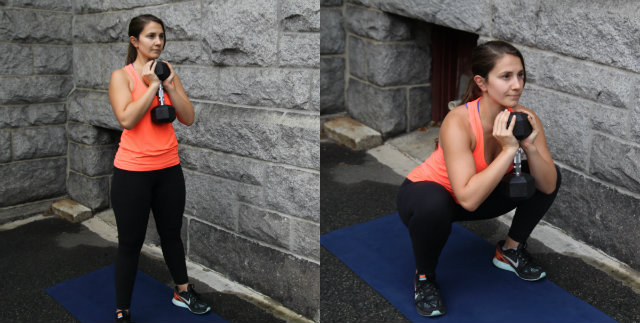
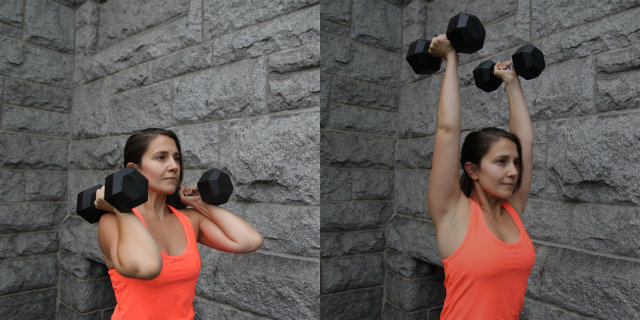
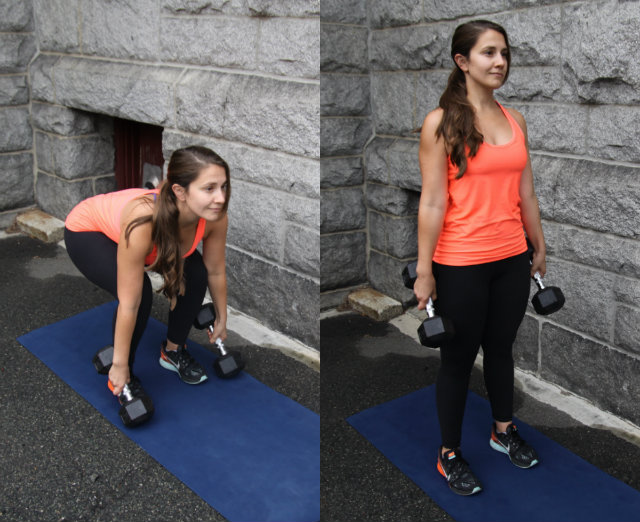
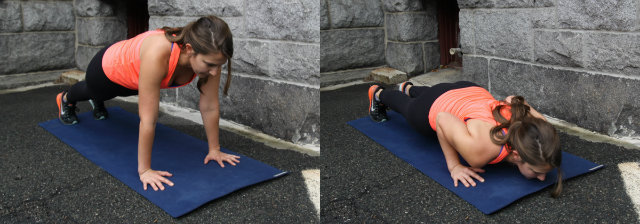
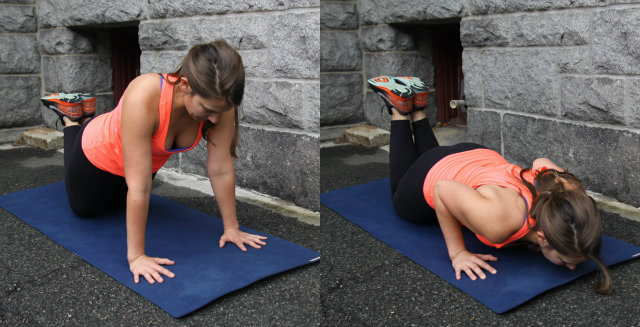
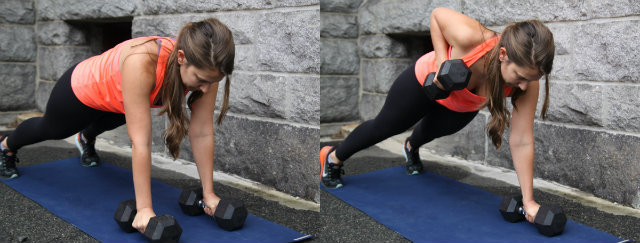
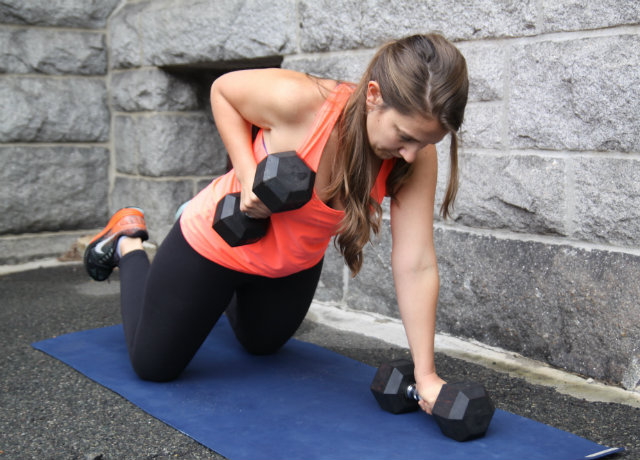
No comments:
Post a Comment